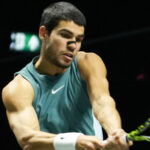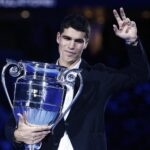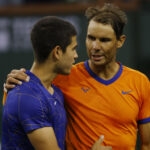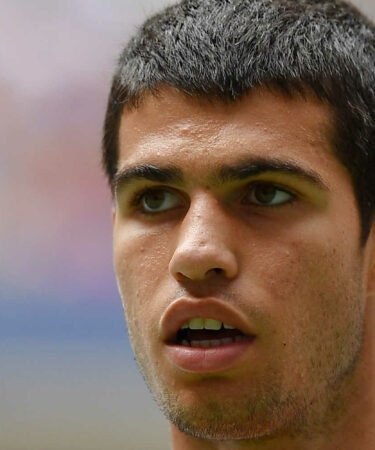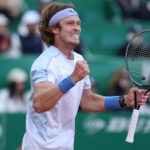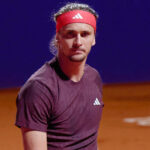“We very quickly saw that Alcaraz had something singular”
Babolat has the best of two Spanish generations, with Rafael Nadal and Carlos Alcaraz swinging the French brand. Jean-Christophe Verborg, Global Sports Marketing Director at Babolat joins Tennis Majors to talk about what Alcaraz means to the brand, and how they see their future together
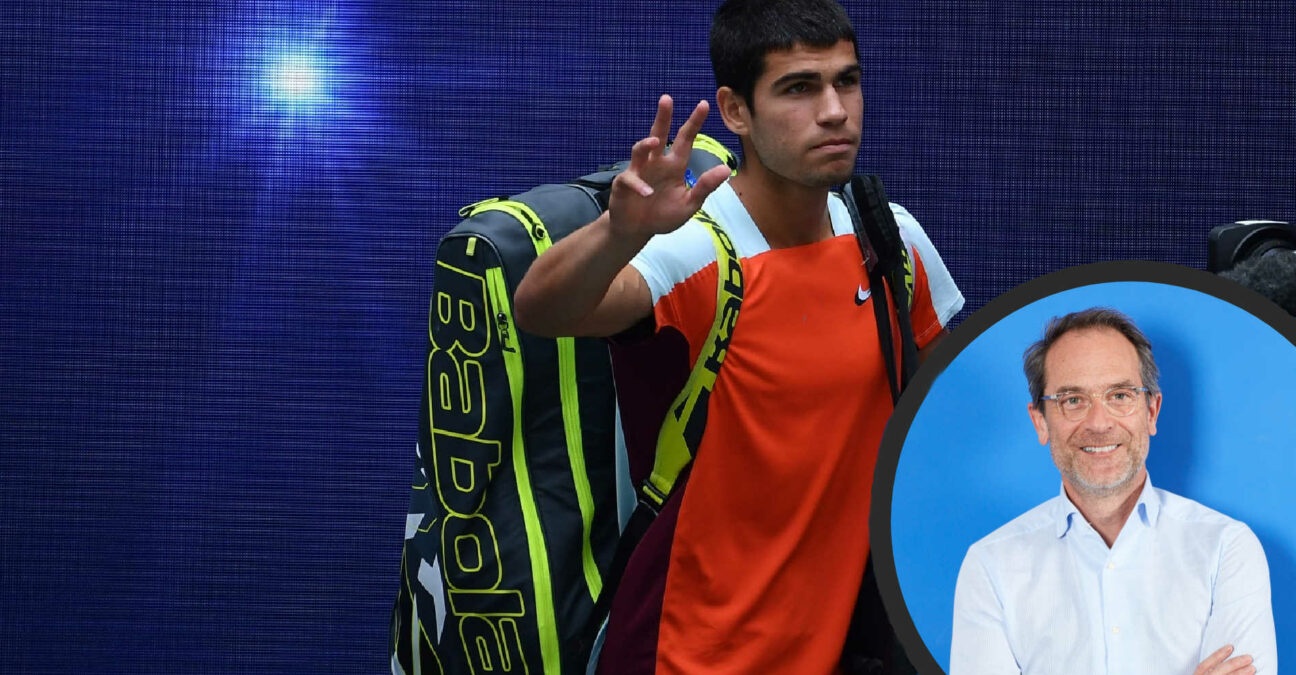 Carlos Alcaraz, Jean-Christophe Verborg, 2022 – © Antoine Couvercelle / Panoramic – © Tennis Majors
Carlos Alcaraz, Jean-Christophe Verborg, 2022 – © Antoine Couvercelle / Panoramic – © Tennis Majors
Following on from our six-part series looking at the rise of Carlos Alcaraz – from Carlitos to Alcaraz – we have an extra treat for you.
Jean-Christophe Verborg is a lucky man; it’s his job to help maintain and build the relationship between Babolat and both Rafael Nadal and Carlos Alcaraz.
Nadal’s history with the French brand has been well-documented but here in an exclusive interview, Verborg answers Tennis Majors’ questions about Alcaraz and Babolat, from their history to their future together.
When did the story between Carlos Alcaraz and Babolat begin?
Carlos comes from a long line at Babolat. From the beginning of our history, when we entered the snowshoe market in 1994, to help us quickly establish our credibility in this sector we wanted to engage in partnership projects with young people, as soon as possible, in order to create a long-term relationship.
This desire is still relevant and Carlos embodies it. In 2013, he was invited by our Spanish subsidiary to play in the Babolat Cup, a kind of national championship organised in Spain by our brand. He was already one of those young people who played well and he signed his first international contract. He was 10 years old.
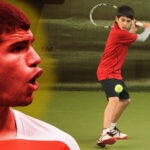
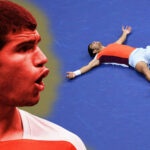


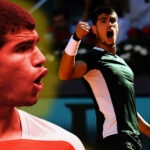
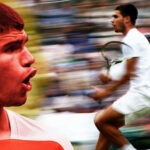
What struck you about him at the time?
We very quickly saw that he had something singular. I don’t like to say “better”, because everyone plays very well. But apart from his game, he had a special attitude. What we’ve always liked about him, whether it’s me or my teams, is the joie de vivre he has on the court. It’s very serious, very solid; but you also feel that he’s having fun, that he’s never overwhelmed by what’s at stake.
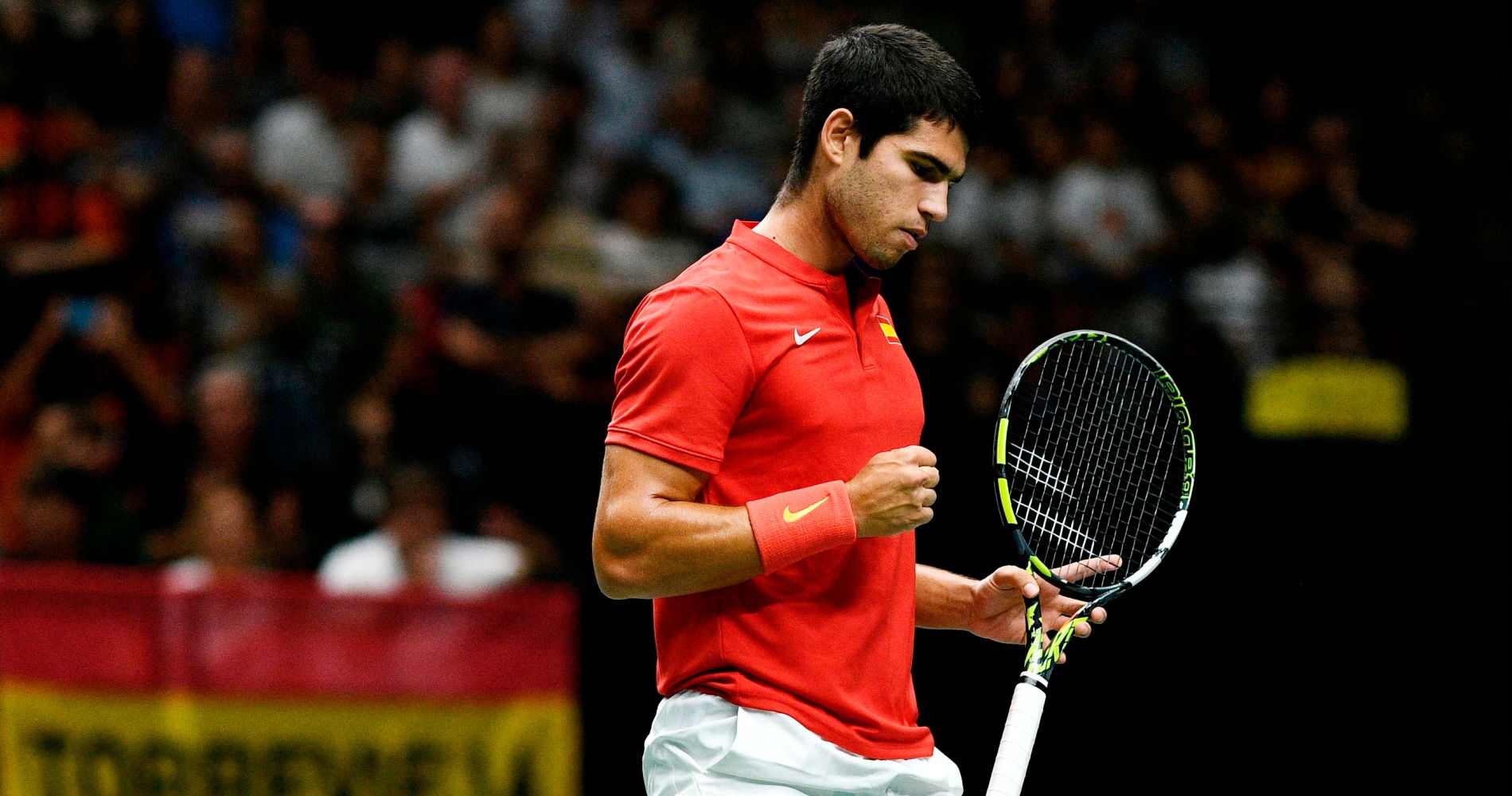
And that, he has maintained. We could still see it in the final of the US Open. He has always given off this positive energy and that is a very important criterion for us. It was a big complement to his already very complete level of play at a young age.
Between Carlos Moya, who was your first big racquet ambassador at the highest level, then Rafael Nadal and now Carlos Alcaraz, you have a real privileged relationship with Spain…
As a Spaniard, Carlos was inevitably influenced by the brand with which Rafa played, even if his father did not play with Babolat. Afterwards, the first criterion for a player to choose Babolat today is the attractiveness of the brand, which is clearly identified today as an expert brand. It’s much easier for us today than it was in the early 2000s.
For our part, we of course want to be strong in the major tennis countries, in the markets where we have subsidiaries and where there are important issues for us. The United States, Japan, Germany are other important countries for us, among others. Carlos happens to be Spanish. If he had had another nationality, we would have been interested too. The fact that he is Spanish is a plus but it is not a fundamental criterion. Above all, we are looking for the kind of profile that tennis, I think, needs. When you see the match between Carlos and Sinner at the US Open, these are the kinds of matches that are good for tennis.
It's good that you are talking about this match between Alcaraz and Sinner, because we would like to focus on it. How did you experience it?
It’s one of the most beautiful matches I’ve ever seen, in terms of level, intensity and suspense. There were 25,000 people in the Arthur-Ashe stadium, the fans were all up, hysterical! It was crazy. At the start of the match, there was a permanent hubbub, everyone was eating and the more the match progressed, the more people were in it. I have rarely felt such electricity. I had goose bumps.
I was in the stadium with my deputy and at one point, we thought it was crazy how many lines they managed to hit. Because there was a risk-taking that was completely crazy. This is what impressed me in this match: this maximum risk taking from the beginning to the end. These guys are not afraid. They are Formula 1 drivers who take the full iron turn because they have confidence.
On the face of it, it comes off as a match of two phenoms with total commitment, high intensity tennis. Some say they just hit big but when you watch the whole match, you see two players who think, who use different channels. If they continue to play like this, the others will have to adapt or find something to counteract their power – and some players know how to do that.
It was a match revealing a lot of things. If it showed one thing, it’s that today, to be top 10 today, you have to know how to do everything well. At one time, the backhand was the weakest wing for many players. This generation strikes from both sides with an intensity and a risk-taking that is crazy. I wouldn’t say it’s new, but it feels like they took inspiration from the best of quite a few champions. It’s a kind of synthesis of everything that others know how to do well. Carlos, he serves very well, he returns very well, he can fly, he does drop shots… He actually knows how to do everything, and he has so many tools.
Did this "new" tennis also change something in your way of designing new racquets?
This is indeed something that we had anticipated for several years. We said to ourselves that as the new generation was going to play faster and harder, we had to have products in our range that meet the expectations of these players. Very dynamic products without being as powerful as Pure Drive or Pure Aero, for players who already have this power in them. With this unbridled game and this rather ample power, these guys need power and control.
So what racquet is Carlos using today?
He plays with the Pure Aero 98. In fact, he has always played in the Pure Aero family, but he changed the model right after the US Open 2020. During Covid, he saw that his game intensified even more more, as his physique developed, as he became more and more powerful. So he asked us for something with a little more control. That’s how he went from the Pure Aero to the Pure Aero VS – which became the Pure Aero 98 last August – a model with a slightly smaller head size (630 versus 645) and a weight balance one little more towards the center of the racquet.
This is a segment that I would call hybrid; the Pure Aero 98 still offers a little more power and dynamism than a square section racquet (like Dominic Thiem’s Pure Strike), but more control than the traditional Pure Aero, the model with which Nadal plays.
This Pure Aero 98 already existed in its concept for a long time with the Aerostorm, which we have since refined and reworked in terms of material. The profile is a little different today. The Aerostorm had a square profile in the frame, with the heart of the racquet and the branches very contoured. With the Pure Aero Drive 98, we’ve “rounded” the whole thing up a bit so that it’s a racquet that, while being control oriented, maintains a super aerodynamic profile, to promote more power and spin.
Today, it’s a model that fits perfectly with Alcaraz’s style: you have the impression that he is in total harmony with his racquet, that it is part of his body.
What is the agreement between Babolat and Alcaraz?
You know the house policy: figures such as the duration of contracts are confidential. But what is clear is that we want to register over time and support our project as a whole, as we can do today with Jo-Wilfried Tsonga and his academy. We want to write a story with Carlos. What’s happening with him is great for us but it’s not a huge surprise either. We have known for a long time that we have someone outstanding, and we suspected that he was going to do something.
Since his title at the US Open, Carlos has been going through a more difficult period. After his defeat in Astana, he even made a parallel with Emma Raducanu. As a partner, how do you help him through these difficult times, and is this also your responsibility?
He has a management team around him, it’s his responsibility to do things well in relation to all that. We made sure not to add to his obligations because what is currently happening to him is madness. We left him alone, we know he has a lot to deal with. We did an Instagram live because we still wanted to have a little time with him to show this closeness. But we did it later. We let the media storm pass. It is not a question of being a ball and chain for him!
It’s true that after the US Open, it was a bit of a whirlwind. Carlos gave a lot of interviews, he played the game because it’s also part of the business. A player who does not want to speak to the media is not good. Now I think he has his head on his shoulders enough and his mind clear enough to quickly get back into his competitive stride. I also know that Juan Carlos Ferrero is extremely rigorous with regard to training periods.
You have to realise that at 19, emotionally, it’s completely crazy to manage all that. My recommendations are: he just did something huge, it’s extraordinary, it’s great for us. But the story continues. We are already saying to ourselves that he must win others. And we have to help him.
You have just spent time with Rafael Nadal: how does he see the rise of Carlos, who is certainly a friend, compatriot and "teammate" within Babolat, but who is also a rival?
With Rafa, we talked a bit about Carlos, his game, his equipment too, Rafa asked me a few questions about that. But when I chat with him, I don’t ask him what they think of each other! They know each other well, of course. But there is a big age gap. Finally, the affinities are perhaps more between Rafa and Juan Carlos Ferrero. They are much closer in age. And then Rafa grew up with Ferrero. When he made his Davis Cup debut in 2004, it was with him.
